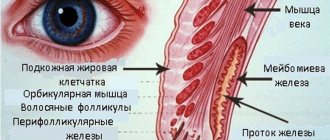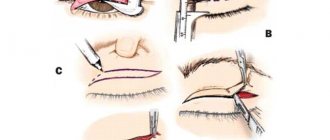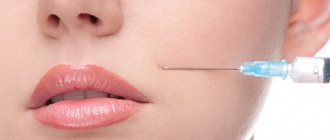Where does the name “zygomatic implantation” come from?
Zygomatic implantation can hardly be called a separate method of tooth restoration; rather, it is a unique addition to those implantation protocols with immediate loading of a prosthesis, which allow, without the use of bone grafting, to get new teeth in just a few days, smile without problems, and eat well. But this improvement only applies to the upper jaw.
As some may have already guessed, zygomatic implantation somehow involves the zygomatic bone. Indeed, the zygomatic bone (translated from Latin zygomaticum) is a bone that directly connects to the frontal and temporal parts of the skull. And also with the upper jaw. These are very deep and dense layers; they never succumb to atrophic processes, unlike spongy bone (it is the center of the jaw bone). In addition, they are not subject to inflammation due to periodontitis or periodontal disease.
Having found this out, the world's leading implantologists came to the conclusion that the use of this particular part of the bone during implantation will be the only way out for tooth restoration for many patients. By that time, special intraosseous zygomatic implants had already been created and actively used in implantology, which helped solve the problem for patients with jaw injuries and cancer patients. So the models, due to their unique characteristics, have become widespread. And we moved from solving complex clinical cases to ordinary patients. True, there are still restrictions to this day.
Pros and cons of technology
The advantages of malarplasty include:
- duration of the result;
- effective change of facial contours;
- skin tightening.
Among the shortcomings are:
- the risk of complications if the doctor has insufficient experience;
- long rehabilitation period;
- The cost of the operation is very high for many.
Zygoma zygomatic implants are versatile, reliable and safe. They have a number of advantages over classic ones:
- quick and minimally invasive intervention: the duration of the procedure does not exceed 2 hours. The patient is immediately fitted with temporary crowns. Restores appearance and functionality,
- reliability: the cheek bone retains its structure and density as much as possible throughout life. Implants installed here are the most stable. There are virtually no risks of inflammation or rejection,
- the ability to avoid sinus lifting: there is no need to perform additional operations on plastic surgery of the maxillary bone,
- wide possibilities for prosthetics: after implantation, any fixed prosthesis can be installed,
- minimum number of contraindications.
Of the negative aspects, one should take into account the impossibility of installing such structures in case of zygomatic bone dysplasia. More often this is a congenital pathology associated with underdevelopment of bone tissue in the designated area.
The relative disadvantage is the high cost. Also in Russia today there are few specialists working using these methods. Most often they conduct appointments in expensive private clinics in large cities.
In addition, many doctors simply refuse to work with zygomatic implants, considering their installation incredibly traumatic. But as practicing doctors note, this is just a matter of technique - if you are a professional maxillofacial surgeon, undergo the appropriate training, and use modern computer technologies in your work, no difficulties will arise.
Who needs zygomatic implantation: indications for the procedure
People first started talking about zygomatic implants back in the late 80s. Already in those days, doctors began to use them in practice, but only in the most severe clinical cases. For example, for the rehabilitation of patients who had serious problems with the upper jaw bone as a result of various injuries or oncological pathologies. Today, such models are actively used to restore dentition in all patients who, due to circumstances and contraindications to classical implantation, want to get results quickly and without resorting to a rather complex, costly and painful sinus lift procedure. In particular, due to acute atrophy of the jaw bone due to prolonged absence of teeth or wearing removable bridges.
The procedure can also be performed for those patients who need to restore chewing teeth in the upper jaw due to osteomyelitis. Even in the presence of purulent-necrotic inflammation of the bone tissue, such implants show a high level of stability and survival (for example, their primary stability indicator is 60-100 Newtons, and when using classical models it is approximately 2 times lower). Treatment is also indicated for older patients who have experienced atrophy of the upper jaw bone due to the natural processes of aging of the body.
Types of correction
- Cheekbone augmentation involves the implantation of silicone implants. When increasing the zygomatic arch in people with a wide upper part and a wide chin, the result may not meet expectations - the cheekbones will only make the face heavier. But for patients with a narrow forehead and narrow jaw, malarplasty allows them to achieve more pronounced cheekbones. Rehabilitation takes place quite quickly - about two months.
- Reduction malarplasty is often performed for congenital or acquired defects after injury. The operation is technically difficult. Resurfacing of the bone tissue is expected. The recovery process with this type takes up to six months.
The difference between zygomatic models and classic ones
Due to the fact that the zygomatic bone is located very deep in the vaults of the skull, it is difficult to reach it. This is one of the main differences between zygomatic implants and conventional classic ones - they are very long, can reach 6 centimeters. For comparison, classic implants are about 2 cm in size. Look at the photo to estimate their size.
Classic models use predominantly the spongy layer of the jawbone, that is, the central one. It is the bone that undergoes shrinkage after the loss of teeth (it contains a large number of capillaries and vessels, which, in the absence of natural chewing load, cease to supply nutrients to the bone cells). Zygomatic models are implanted into the cheekbones - unlike the jaw bone, they are not subject to resorption and inflammatory processes.
What implants are used for zygomatic implantation?
Leading specialists from ]Nobel Biocare[/anchor] were the first to present such implants to the general public. It was they who, more than 10 years ago, developed and successfully put into practice the first zygomatic line Zygoma (“Zygoma”), which to this day is one of the best, clinically proven, successful and truly brings incredibly good results. It turns out that it was they who set the direction of zygomatic implantation - first in Europe, and in recent years in Russia.
Interesting! The Nobel company (America and Switzerland) also has a representative office in Russia. But now she gives the right to use her methods to strictly defined clinics, which are located mainly in Moscow, and have passed more than one test and certification, whose specialists have many years of experience and, of course, specialized education. These are only a few, but they successfully use the best methods of progressive implantation with immediate loading of the prosthesis on Nobel implants.
A little later, analogues began to appear, produced by no less well-known companies producing implants and the entire related range. Among them, the most successful and well-known are Noris Medical (Zygomatic), Oneway Biomed, Southern Implants.
The presented models also have differences. For example, if the Zygoma implants from Nobel have a porous coating and a narrowed top for better fixation of the prosthesis, then Oneway Biomed are smooth, ideal for those patients who have developed inflammatory processes in the bones. In addition, Biomed also solves the problem of adentia in the lower jaw, using the chin area. In addition, they are one-piece (the abutment and the implant body are combined) - this is an innovation from Biomed.
As for “Noris”, this is, so to speak, a “remake” of the famous models from “Nobel”, i.e. their exact copy. They also have a right to exist, but keep in mind that the original is always better, and it has much more clinical research. Regarding the South African model Southern Implants, it would be fair to note that it is unique in its kind and has really proven itself, but in Russia it cannot yet pass the appropriate certification.
The products of the Belarusian company Radix can also be considered a novelty of the last few years. The company itself has existed for about twenty years (since 1989). It employs practicing doctors and good engineers who have already introduced more than 15 models of artificial roots to the medical services market. However, only in recent years have models produced by this company become popular and earned respect in Russia. All this thanks to the optimal price-quality ratio. There are also zygomatic models, which are produced under the name “ZygoLine” (“ZygoLine”).
What are the disadvantages
The main disadvantage, if you can call it that, is the fact that not every implant surgeon will be able to perform an operation using special elongated implant models. The specialist must have appropriate experience and skills in working with this type of implant system, undergo additional training offered by implant manufacturers, and obtain the appropriate certificates. In addition, the doctor must be fluent in the special software necessary for detailed modeling of the treatment process.
The disadvantages also include the cost of this method of restoring chewing teeth. For example, the price of Zygoma implants in Moscow is quite high. For comparison: the use of two Zygoma Nobel zygomatic implants as part of implantation according to the all-on-4 protocol increases the cost of treatment from 350 to 450 thousand rubles.
About the features of the method name
Often on the Internet you can find terms such as “zygomatic implantation Zygoma” or “zygomatic implantation according to the Zygoma system.” Also often, regarding all elongated implants that exist today, many patients and even specialists use the names “Zygoma” or “Zygoma”. Although, as we discussed in the previous section of the article, similar models are created by different manufacturers, each of which has its own unique name.
The thing is that such names, although not entirely correct, have already become common nouns, because It was Nobel (which owns the patented name of the Zygoma model) that was the first in the world to create such long implants. And it is the Zygoma implants from Nobel that have the most positive reviews from specialists and patients from all over the world.
What is malarplasty?
Malarplasty is a plastic surgery to correct the shape of the cheekbones. It allows you to create the correct shape in this area of the face, improve the oval, and also rejuvenate your appearance: get rid of wrinkles, sagging cheeks, and excessively pronounced nasolabial folds.
It can be performed to increase or decrease cheekbones. Previously, the filler function was performed by the patient's bone tissue. But such implants had to be given the desired shape, which is very difficult. In addition, bone tissue tends to resorption (resorption, destruction). Therefore, the bone prosthesis was replaced with a silicone one. It is durable and has increased safety. Also, the following is used as a filler:
- Fillers: give a good cosmetic effect, but retain the effect from six months to several years, after which the procedure must be repeated.
- The patient's own fat: a rejection reaction is excluded, since the filler is completely biocompatible with the patient's tissues. Adipose tissue takes root well in the recipient area, but also has the disadvantage of being absorbed over time.
Cheekbone reduction surgery is performed by grinding or displacing the bone tissue. It is more traumatic for the patient and has a longer rehabilitation period.
The importance of preparation for this operation
Zygomatic implantation using the Zygoma system requires a high level of professionalism and responsibility on the part of the doctor, otherwise during the procedure and after it the patient can expect various complications (for example, perforation of the bottom of the maxillary sinus, the appearance of chronic sinusitis, implant rejection). That is why never agree if the doctor immediately offers treatment upon contacting the clinic. First, the specialist must exclude contraindications (especially ENT diseases and, in particular, inflammation in the nasal sinuses), refer you to a computed tomography scan and blood tests.
In addition, the clinic where the procedure will be performed must use specialized equipment and software (3D technologies, intraoral scanners). With the help of innovative technologies, the doctor must carefully work through the entire process of installing elongated models, determine the location of their positioning, and make templates for the surgical stage of treatment. It’s even better if dentistry has a 3D printer, with which the doctor will create lithographic models of the patient’s jaw (real ones, created from a special polymer) and “rehearse” the surgical stage on them. This way, during the actual installation, the number of complications will be minimized.
It is also important to mention here that there are very few doctors who actually use such unique models in practice (in particular, “Zygoma” from Nobel, since they are the most common in Russia). Almost all of them work primarily in Moscow. However, this feature does not prevent patients from all over Russia from coming to the capital after they appreciate the advantages of the method and are faced in their cities with the impossibility of quickly and efficiently solving the problem of edentulism in the upper jaw.
Price
Prices for malarplasty vary from 65 to 145 thousand rubles. In Moscow clinics the prices are as follows:
| Type of operation | Price |
| Enlargement of cheekbones | 35,000 - 90,000 rub. |
| Implants | 30,000 - 50,000 rub. |
| Reduction surgery (bone resurfacing) | 90,000 -145,000 rub. |
Author: Mamedov Elchin Velievich Plastic surgeon, associate professor of medical sciences He is considered one of the founders of endoscopic facial rejuvenation in the Russian Federation. He has performed many operations on endoscopic facelift, otolasty, rhinoplasty, platysmoplasty, liposuction and abdominoplasty.
How many zygomatic implants will help restore teeth?
Intraosseous implantation into the zygomatic bone will help patients restore teeth with multiple and complete edentia, that is, when there are no chewing teeth or even all teeth. Of course, only on the upper jaw. And, naturally, depending on the clinical situation, doctors will use a different number of artificial roots.
So, in order to restore a segment of 3-4 missing chewing units, specialists will use Zygoma zygomatic implants (or models of another brand) in an amount of 1-2 pieces. To restore complete edentia, a minimum of 2 and a maximum of 6 pieces will be required. But here it is necessary to take into account that to solve the problem of complete edentia, doctors can combine elongated models with classic ones. For example, specialists can install 4-6 implants in the jaw, of which only some will be zygomatic, the rest will be classic.
Existing Alternatives
In some clinical cases, it is simply impossible to place zygomatic structures. For such situations there are a number of alternative options:
- sinus lifting is a surgical technique for slightly shifting the bottom of the maxillary sinus to avoid injury. At the same time, the missing volumes of bone tissue are replenished with the help of osteoreplacement material. This manipulation is not technically difficult, but it is not always effective. Requires lengthy postoperative recovery and significantly increases the cost of the entire treatment,
- replanting of bone blocks is a type of bone grafting in which a bone block is transferred to the site of an atrophied area of the maxillary surface. It involves the use of donor material from the patient himself, taken from the chin area or pelvic bone. A rather traumatic procedure that requires lengthy preliminary preparation and complex recovery,
- basal implantation (BasalComplex) is an immediate loading protocol that involves the implantation of special elongated and thinner structures with a smooth neck and antimicrobial coating into the jaw. With a comprehensive restoration of the jaw, up to 12-14 implants are implanted, onto which a permanent prosthesis is then attached using a cement composition. The technology is used for severe atrophy in the distal parts, as well as against the background of inflammation in periodontal tissues,
- all-on-4 and all-on-6 are one-stage protocols that involve fixing the prosthetic structure on 4 or 6 implants. Suitable only for cases of relatively minor atrophy in the distal regions, but can be supplemented with zygomatic implants,
- removable prosthetics is the cheapest method of prosthetics. Dentures cause a lot of trouble, cause discomfort, rub the mucous membranes, and distort diction. Today it is possible to install better and more comfortable modern prostheses, for example, Acre-Free and Quadrotti, but it must be taken into account that removable systems, like bridges, are not able to stop the atrophic processes in bone tissue. The only solution to this problem is still implantation.
Sinus lift Bone grafting Basal method All-On-4
Zygomatic implants are definitely worth choosing in case of diseases or destruction of the tissue of the upper jaw. They provide quick rehabilitation with complete restoration of external attractiveness, speech and digestion. They are most suitable for complete absence of the upper dentition or a segment of teeth in the distal region. Availability of financial resources plays a big role in the application of this technique.
If the structure of the upper jaw is not very thinned and weakened, and the patient needs to restore 1-2 teeth, classical implantation with a preliminary sinus lift is often performed. If there is enough maxillary tissue, there is no point in installing zygomatic structures. If the jaw bone is in good condition, ordinary implants will provide the same reliable fixation as elongated zygomatic implants.
In difficult financial situations, a removable denture can be a temporary solution to the problem. Prolonged wearing of such a device causes softening of hard tissues and changes in bone relief. It should be taken into account that this may subsequently complicate even zygomatic implantation.
Installation features of extended models
Zygomatic implants (most often doctors use Zygoma from Nobel) are implanted into atrophied areas of the jaw bone in the chewing zone. The implants are installed at an angle, i.e. an angle of 30-60 degrees. This feature allows the doctor to eliminate injury to the sinuses and facial nerve, and also to use the largest possible area of bone tissue to improve the quality of attachment and stability of the artificial root. Elongated models are fixed directly in the zygomatic bone.
The prosthesis on such implants can be fixed either immediately or a few days after their installation. To give the entire structure maximum naturalness and functionality, doctors use angular multi-unit and screw type fixation. The specialist can also use implants with a beveled edge and straight abutments, but in such a situation he will not be able to fix the prosthesis using the screw method.
Technique
The operation is performed under general anesthesia with tracheal intubation. Before starting, the surgeon selects the type of tissue access. Typically, the approach comes from the oral cavity, which involves a 1 cm incision in the alveolar region of the jaw. The advantage of this method is hidden scars, but there are also disadvantages - the risk of infections acquired through the oral route increases.
The external method is used if malarplasty is combined with a facelift. In this case, the scalpel is held behind the ear, heading towards the temporal area.
Cheekbone augmentation is performed as follows:
- Through the selected access, a plane is formed for placing the implant.
- The endoprosthesis is installed in the periosteum pocket. Here it is important to avoid contact with the oral mucosa and teeth.
- The material is fixed in the new position.
- Two stitches are applied.
Approximate duration: 1.5 hours.
Cheekbone reduction is carried out according to the following plan: after marking and making an incision, the doctor grinds the bone tissue with special equipment. This increases the likelihood of damage to the facial nerve.
The newest technique in plastic surgery is three-dimensional reduction. It involves resection of the protruding part of the cheekbone and moving it to a recessed position within the periosteum. With this method, the oval of the face changes.
After completion of the procedure, the patient is treated with antiseptics to reduce pain after recovery from anesthesia.
Will it hurt to have long implants?
Zygomatic implants and zygomatic implants (specifically Zygoma) are something that causes panic in some patients at first. The models are very long, and the thought that they will be placed directly into the vaults of the skull, and not into the jawbone itself, is already frightening. However, real reviews from both the patients themselves who decided to undergo the procedure, and doctors, allow us to judge that everything is completely painless with the modern methods of anesthesia that are used today.
If classical injection conduction or infiltration anesthesia is not suitable for you due to limitations or panic fear of pain, then there is always the opportunity to resolve the issue with the help of sedation with useful xenon gas - you are fully conscious, but do not feel any pain or even the slightest anxiety, because . completely relax. And after the procedure, you can easily get up, leave the office, talk and adequately perceive all the information.
If for some reason neither one nor the other suits you, then dental implantation can be performed under intravenous sedation or anesthesia. In this case, you will be completely immersed in sleep, you will not hear the sounds of the instrument that are unpleasant for your psyche, and you will not feel pain. But general anesthesia again implies careful preparation and the exclusion of contraindications. And in order to find out more about this, you must consult a doctor.
On the Internet you can find many discussions on the topic that dental implantation (and in particular, zygomatic dental implantation) is very painful and scary. In fact, reviews from those who have gone through this procedure refute this fact. But doctors emphasize that it is really best to perform zygomatic implantation under anesthesia or intravenous sedation, because the operation is very traumatic.
Survival rates and service life
We have already mentioned more than once that Zygoma zygomatic implants from Nobel enjoy well-deserved respect from practicing implantologists from all over the world. Reviews about them are extremely positive. The thing is that the company constantly tests its products and invests huge amounts of money in clinical trials and research, which is why it produces ideal analogues of tooth roots that boast high performance characteristics and survival rates. The survival rate is 95.2% percent after 101 years of use, and this is only for those patients who have the most difficult clinical cases (poor health, acute atrophy of the jaw bone). Practitioners themselves claim that with the professionalism of specialists who install elongated models, high-quality preparation for treatment and the exclusion of all contraindications for patients, this figure reaches 98%.
In general, all models announced today from different manufacturers have a lifetime quality guarantee. Therefore, provided that their installation was carried out by a qualified specialist, and the patient complies with his recommendations, we can say that the elongated roots will serve for the rest of his life. But the prostheses that will rest on them will have to be changed as they wear out (depending on the material, after 5-10 or 15-20 years).
Types of implants
Endoprostheses used to enlarge the zygomatic region vary in shape and size. Today, all products have the same filler – silicone.
There are implants:
- Oval. Most popular for correction of the anterior zygomatic area. The face becomes wider.
- Anatomical. Will be appropriate for sunken cheeks.
- In the shape of an ellipse.
The choice of product is up to the doctor. To form ideal proportions of facial features, the surgeon needs to choose the right implants. Otherwise, an unnatural protrusion of endoprostheses under the soft cheek area (the so-called Bichat's lumps) is possible.
About prosthetics after installation of zygomatic models
Implantation using Zygoma zygomatic implants is a one-stage treatment method, the main advantage of which is almost instant prosthetics. What is meant by immediate loading of the prosthesis?
The installed artificial roots must literally be loaded with a fixed prosthesis during the first week (this is the maximum). It can be either immediately permanent (for example, from a ceramic composite) or adaptive. The first option is an ideal solution for patients who want to bypass the stage of re-prosthetics, but such a solution will, accordingly, cost a little more. The second option is an inexpensive adaptive structure made of light and durable material (for example, metal-plastic), which will need to be replaced after the implants are completely implanted in the jaw bone (this takes about 4-8 months).
The prosthetic structures will necessarily contain a metal beam, which will provide only the established roots with the necessary stabilization and will have a splinting effect. This feature will allow the patient, almost immediately after installation of the Zygoma zygomatic implants, to begin to eat fully, smile and talk without embarrassment, already during the rehabilitation period. Moreover, as a result of the correctly distributed chewing load from such a prosthesis, the rehabilitation period itself will pass very quickly, because the jaw bone will “work”, and the metabolic processes in it will contribute to the speedy engraftment of artificial roots.
So, literally 1-3 days after installation, Zygoma zygomatic implants will immediately be loaded with a permanent prosthesis, which will be connected to them through an abutment using screw fixation. This method of fixation provides many advantages, because... allows you to remove “new teeth” at any time to make adjustments (and quite a lot of them may be required, especially if the teeth have been missing for a long time and the bite has become significantly damaged).
On a note! If you immediately choose a prosthesis made from a material such as ceramic composite, then you will not have to think about re-prosthetics for the next 10-15 or even more years. When installing an adaptive metal-plastic system, you will need to think about replacing it with a more durable one, at least after 6 months, maximum after 3-5 years.
Features of prosthetics
The method under consideration involves prosthetics in two stages. First, after implantation, the adaptive orthopedic structure is fixed. The prosthesis holds the artificial roots in the correct position, does not interfere with their positioning, and at the same time provides the necessary load on the bone to activate its regeneration processes.
“The orthopedic structure is fixed with a screw method. This means that special screws are used to install it, which are screwed into the abutments through the holes on top of the crowns. This is very convenient, because if necessary, the prosthesis can always be removed in order to correct it taking into account changes in the bite after implantation,” notes Yuri Aleksandrovich Vasin, an orthopedic dentist with many years of experience.
A clear example of zygomatic implantation
You can replace the prosthesis with a permanent one in an average of 6-12 months, that is, after complete osseointegration of the implants.
In which implantation complexes are used?
We have already found out that zygomatic implantation is not a separate independent method. And an addition and improvement to existing implantation protocols with immediate loading of the prosthesis, that is, when almost immediately after installing the implants, or a few days after that, you get a perfect smile. In what complexes are zygomatic implants used?
Segment of chewing teeth on the upper jaw
The method was developed by the Russian doctor Put V.A., who was one of the first in Russia to use unique zygomatic models in his practice. At the moment, his work experience is more than 20 years. The specialist works in Moscow, at the Smile-at-Once innovation center (this is a clinic that currently applies all one-stage implantation protocols). The doctor is also in demand as a specialist who teaches the intricacies of work to Russian colleagues. A specialist writes research papers.
The essence of the method: restoration of 3-4 units lost in the upper jaw in the area of the chewing teeth. To implement the protocol, it is necessary to use 1-2 Zygoma models and classic implants if necessary. Here, depending on the clinical case, options are possible: installation of 1 extended and 1-2 classic, installation of 2 extended and one classic.
Complex for four
The official name of the complex is all-on-4 (all on 4 implants). The developer of this protocol is the company Nobel already mentioned above. The name speaks for itself: 4 implants, most often original - also “Nobel”, are installed in the bone, two front ones strictly parallel to each other, two side ones at an angle. This method can restore all teeth, both above and below. But in the upper jaw, with bone atrophy in the lateral sections, specialists today can also use zygomatic implants - there can be two or even all four of them.
Complex for six
All-on-6 is essentially a refinement of the previous protocol. When, with more significant bone tissue resorption than in the first case, there are six pieces of implants per jaw, providing reliable support for the prosthesis and eliminating the risk of its breakage and failure of the entire structure.
As for zygomatic implants, in this complex they can also be used in quantities of 2, 4 or even 6 pieces.
Basal implantation
This is the undisputed leader in the field of implantology. This method, according to reviews from patients and dentists, gives people who have long been disillusioned with all medicine combined a chance to restore absolutely all the teeth in their mouth (or on any of the jaws) in literally 1 day.
We are now talking about those who, in the recent past, were predicted to wear removable dentures for life. About people with periodontal disease and periodontitis, elderly patients who abuse smoking, patients with diabetes and osteomyelitis, and those suffering from complete edentia. Those who have worn these same removable dentures and bridges for a long time and have encountered acute bone atrophy.
It’s good to know that today there is a way out for them - this is the installation of 8-12 implants per row. If it is necessary to use zygomatic models in this complex, then only the option from Biomed is used. Such a number of artificial roots allows you to do without unnecessary problems, without bone grafting, without time and material costs (as if you had to restore teeth separately), without the need to wear removable devices. The prosthesis will not be removable, and will be installed a few days after the implants themselves are implanted.
If all parts of the chewing teeth are missing
Have you lost several chewing teeth on the left or right side of your upper jaw? Today, such a problem can be solved quickly and efficiently with the help of zygomatic implants, especially against the background of acute atrophy of bone tissue, i.e. without sinus lift. In general, end defects are always very difficult to solve. But this particular treatment protocol allows the use of only 1-2 zygomatic implants, however, the implant surgeon will definitely install 1-2 classic ones as assistants. Such a tandem will make it possible to return missing teeth in a very short time, restore their functionality, and even become a kind of foundation for the future. After time, the patient will be able to return to the clinic and, if necessary, easily restore the missing elements of the smile.
Restoring part of a smile with Zygoma implants
Such an offer today is carried out mainly using Zygoma implants, and judging by the reviews of patients, this is a real salvation:
“When I lost my teeth on the upper left, I spent a long time looking for a clinic in Moscow where I could restore them with implants, but everywhere they offered one thing - to remove everything completely. And even though my teeth have always been problematic, this is too much. As a result, through third parties, we can say that through connections, I got a consultation with the doctor Putya Vladimir, he told me and showed me the zygomatic implants, honestly, at first I was shocked and afraid, but the doctor has all the necessary certifications and certificates, everything is very modern. I read about him that it was he who began to practice this approach in our country and even teaches it to students and other doctors, so my mistrust disappeared, especially after a personal consultation. I’m more than satisfied with the result!”
[email protected] , from correspondence on the forums
Advantages and features of the technique
Let's look at the main features of implantation using the Zygoma system (yes, this has already become a household name regarding this option for restoring smile defects, although models from Nobel may not necessarily be used in complexes). They give us the right to talk about its clear leadership compared to other methods when it comes to restoring teeth in the upper jaw:
- the ability to do without a sinus lift on the upper jaw: such an operation is quite traumatic; during it, the specialist pushes back the maxillary sinus and places artificial material inside this cavity. There are often cases when such manipulations are accompanied by damage to the nasal sinuses, as a result of which the patient is faced with unpleasant side effects, the mildest of which can be considered chronic runny nose, and the most severe - implant rejection. The use of extended implants helps avoid this procedure. They are very firmly fixed at an angle, and even atrophy in the lateral parts of the bone is not an obstacle for them,
- complete restoration of the upper jaw dentition,
- immediate restoration of smile aesthetics: the prosthesis is fixed to the implants either on the day of their installation, or a few days after that. It is equipped with a metal base, an artificial gum line, and beautiful artificial teeth (it is better if the prosthesis is made of ceramic composite, then the patient can generally afford to avoid re-prosthetics in the next five to ten years). All this looks very nice, and also allows you to chew food,
- implantation can be performed simultaneously with the removal of damaged teeth,
- a minimum number of restrictions: suitable even for those patients who suffer from periodontal disease and periodontitis, have been involved in accidents and have received injuries to the upper jaw. The only thing is: the method cannot be used if there is inflammation in the maxillary sinuses,
- precise positioning of implants: despite the fact that they are installed very deeply, the risk of errors during their fixation is completely eliminated. After all, before treatment, the doctor necessarily carries out 3D modeling of the entire process based on a computed tomography scan of the patient’s jaw, and creates unique surgical templates through which implantation is carried out,
- reducing the risk of peri-implantitis: due to the fact that deep and sterile layers of bone are used during installation, and the implant itself (if it is two-piece) does not come into contact with the inflamed gum,
- reliable and durable fixation of implants in the bone: when installing them, the risk of the slightest loosening or falling out is completely eliminated. This condition persists even when the structure is subjected to a sufficiently strong mechanical impact,
- shortened treatment time: due to the absence of bone grafting, quick installation of a fixed prosthesis, quick rehabilitation, you do not have to visit the doctor often,
- use of other implants in combination: together with extended implants (from 2 to 6 pieces depending on the condition of the bone tissue), from 2 to 6 classic models can also be installed in the patient’s bone, designed to provide high-quality support for the prosthesis and redistribute the load.
If it is not possible to perform a sinus lift
This complex surgical procedure helps restore the required amount of bone tissue in the upper jaw. But after it is carried out, the patient, in addition to spending additional financial resources on treatment, time, nerves, also risks a number of complications: during the operation, an insufficiently qualified doctor can touch a nerve, which will lead to numbness of the face. The doctor can also injure the low-lying maxillary sinus, which will result in constant chronic runny nose and sinusitis.
The photo shows a diagram of the sinus lift operation
For those patients who prefer zygomatic implants, such risks are completely excluded. The angle of inclination and length during installation allow artificial roots to bypass the maxillary sinuses and other vital organs.
In this section, special attention should be focused on the disadvantages of zygomatic implantation: one of the contraindications to its implementation is the presence of an inflammatory process in the maxillary sinuses, because the zygomatic implant, when fixed, borders on their membranes, and in some cases even moves them slightly. In order not to miss this moment, before treatment the doctor is simply obliged to send you to a multispiral tomography of the jaw and thoroughly examine its data.










